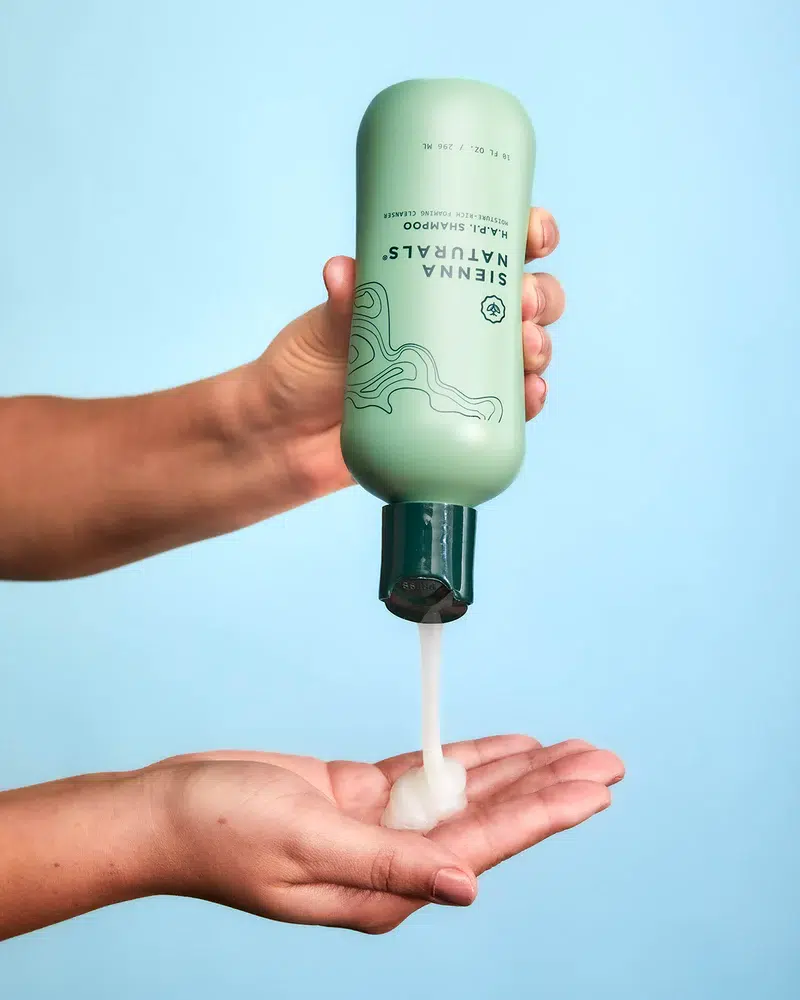
What Is The Blue Mindset? Why We’re Spending Time Near Water
You know that slight euphoria when you get out of the water at the beach and walk back up to your towel as you breathe heavier, taste the salt on your lips, and start to air dry in the sun?
“You know that slight euphoria when you get out of the water at the beach and walk back up to your towel as you breathe heavier, taste the salt on your lips, and start to air dry in the sun?”
Too specific? How about this: That calm, sleepy feeling after a day at the beach or a long swim in the pool. There’s a name for that calmness, coined by marine biologist Dr. Wallace J. Nichols in his 2014 book “Blue Mind.”
Dr. Nichols died this past June at the age of 56. He’s survived by his wife and two daughters, and the legacy he created with his “Blue Mind” work lives on. In fact, it’s safe to say that the blue mindset has taken off. TikTok has over three million posts on the subject, and the theory continues to pop up in wellness spaces all around the world.
So how exactly does blue mind theory work? The book’s full subtitle pretty much sums it up: “The Surprising Science That Shows How Being Near, In, On, or Under Water Can Make You Happier, Healthier, More Connected, and Better at What You Do.” The theory is supported by science, not just anecdotal evidence — read on for more on the science behind the idea and how to incorporate it into your day-to-day.
What is blue mind theory?
Simply put, blue mind theory is the idea that being in or near water makes you calmer and happier, both in the long and short term. Nichols’s “blue mind” is that mildly meditative state you have while interacting with water. I always thought that the elation I felt during a beach or pool day had more to do with having a day off, or being on vacation, than the water itself. But Dr. Nichols’s theory says otherwise.
“Blue mind theory is the idea that being in or near water makes you calmer and happier, both in the long and short term.”
“When we’re with the water, it washes our troubles away. When we’re standing at the sea, taking it in quietly, it takes away our stress,” says Dr. Nichols in a 2012 TEDx Talk. “It’s one of the reasons why we love the ocean so much. It reduces our anxiety, it connects us to ourselves.”
“I don’t think it’s a coincidence that so many people crave beach vacations or live near bodies of water,” says Dr. Brooke Keels, chief clinical officer at Lighthouse Recovery. “Our brains and bodies are naturally drawn to this calming element.”
Marcus Smith, a licensed clinical professional counselor and executive director at Alpas Wellness echoes that sentiment — that universal feeling of calmness when you’re by the sea. “Many people feel an instant sense of peace when they hear waves crashing on the shore or when they take a leisurely swim,” says Smith. “The sensory experience of water — its sound, sight, and touch — appears to tap into a deep part of our psyche that promotes relaxation and mental clarity.”
How does blue mind theory work?
Nichols makes the argument in his book that the cognitive benefits we experience from water aren’t just in our heads — they’re backed up by scientific evidence. He makes that case in a 2018 interview with Discover Boating, too.
“When we spend time near or on the water, it gives our brain a break. It gives our auditory system, our visual system, and our somatic system, so our bodies, a break. We get less stimulation coming into our eyes, less noise, fewer voices, fewer distractions,” he explains.
“When we spend time near or on the water, it gives our brain a break. It gives our auditory system, our visual system, and our somatic system, so our bodies, a break.”
– Dr. Wallace J. Nichols
“And when you’re in that mode, you get some bandwidth back and your brain uses that bandwidth for a whole bunch of other things that involve creativity, relaxation, having insights and being innovative, making new connections,” he continues. “A lot of people describe it as a deeper thinking.”
At The Good Trade, we know all about how generally spending time in nature helps you lower stress. But spending time surrounded by water, specifically, has also been linked to positive mental health benefits in study after study.
In one study, participants from 18 countries showed an overall positive association between blue space visits and mental health. In another, researchers in Japan found that visiting the beach was associated with improved mental health and mood. And a 2019 study showed that folks who live less than a mile from the ocean are 22% less likely to report depression and anxiety.
“When our brains are constantly bombarded with so much stimuli and information, we can easily become overwhelmed, stressed, and anxious,” says Dr. Keels. “When we look at water, it provides a sort of ‘visual white noise’ that allows our brains to relax and enter a calmer state,” she explains. “This is similar to how meditation or mindfulness practices can quiet our thoughts and bring us into the present moment.”
“A 2019 study showed that folks who live less than a mile from the ocean are 22% less likely to report depression and anxiety.”
“I often tell my patients about the mammalian dive reflex, where the body, from an evolutionary point of view, is conditioned to lower the heart rate in order to conserve oxygen when in contact with water,” says psychologist Antoniette Geerman from Psyched Aruba. “This is similar to how our bodies ‘prune’ when submerged in water for extended periods, enhancing our grip and survivability. We can reap the benefits of this reflex by simply standing next to a body of water.”
Need more proof? Consider how hospitals often show ocean landscapes or trickling waters in waiting rooms or patient rooms for a bit of stress reduction.
So there’s definitely meat to the blue mind theory, and water’s calming effect has lots of possible explanations. Maybe it’s because blue is calming to the eyes or because white noise is soothing to the ears. Or because you’re less likely to look at a screen while you’re by the water. Maybe it’s because when you’re at the beach, you’re usually more physically active — swimming, walking, surfing — or because swimming itself has both physical and mental benefits. It could even be that the ocean air has a higher concentration of negative ions, which can reduce symptoms of depression. Likely, it’s a combination of everything.
“Water settings are multisensory experiences,” says Lindsey Tong, a licensed clinical social worker and the clinical director at Profound Treatment. “The rhythmic crashing of waves, the glinting surface of the ocean, and a gentle breeze brushing skin all create conditions for relaxation and mindfulness. Being near bodies of water encourages people to slow down their breathing and take some time out from life’s stresses.”
How can you use blue mind theory in everyday life?
Want to start incorporating blue mind theory into your wellness routine, but don’t have the resources to go to the beach every day? That’s fine — most of us don’t!
Consider walking by a lake, pond, or river, if you have one nearby. Bonus points if you can get in the water, but simple proximity can also “do wonders for our overall well-being,” says Dr. Keels. And speaking of getting in the water, find out if your city has any public pools. Or if your gym has one, take advantage of it every now and again.
“Consider walking by a lake, pond, or river, if you have one nearby. Bonus points if you can get in the water.”
“If you have no access to blue spaces, you can consider building a sanctuary at home with fountains or aquariums that bring calming energy into the space,” says Tong. A water feature, whether indoors or outdoors, adds a touch of that white noise that, by extension, brings blue mind benefits into your space. Even a relaxing at-home bath works to put you into that blue mindset — try meditating every time you take a bath for the next few weeks, and you’ll see what we mean.
“Even a relaxing at-home bath works to put you into that blue mindset — try meditating every time you take a bath for the next few weeks, and you’ll see what we mean.”
The beach remains the gold standard for capitalizing on blue mind theory — and if you’re not someone who usually goes for a swim in the ocean, we challenge you to head outside your comfort zone next time you’re beaching and dip in the water, even if only for a minute.
“I often advise my clients to take advantage of the cheapest massage available — floating in the sea, where the subtle currents help relax the body,” says Dr. Geerman.
Smith notes that these water therapies that focus on the blue mindset work well in tandem with other treatments, especially if someone is seeking mental health help. “While [water therapy is] not a replacement for more traditional forms of therapy, it can be a valuable complementary approach,” he says.
“Water therapies that focus on the blue mindset work well in tandem with other treatments, especially if someone is seeking mental health help.”
“Our response to water is deep, it’s human, it’s about life and it’s about survival,” Dr. Nichols told CBS Mornings in 2014. “When you see water, when you hear water, it triggers a response in your brain that you’re in the right place.” To dive deeper (get it?), check out “Blue Mind: “The Surprising Science That Shows How Being Near, In, On, or Under Water Can Make You Happier, Healthier, More Connected, and Better at What You Do.”
Natalie Gale is a Contributing Editor at The Good Trade. She is a Boston-based freelance journalist. When she’s not writing about art, food, or sustainability, you can find her biking to the farmers’ market, baking, sewing, or planning her next Halloween costume. Say hi on Instagram!




